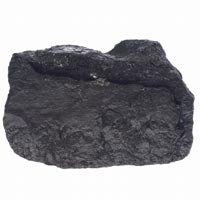Yvonne Traa discusses how converting coal to energy and fuel can be made more environmentally friendly
The rising worldwide population and increasing energy hunger of emerging and developing economies such as China and India, is making the demand for energy increase at a large rate. Traditional fuel sources such as coal and oil cause emissions of greenhouse gases, which is a concern for climate change. The ultimate goal is to use renewable energy sources, such as solar or wind power, where the emission of greenhouse gases is zero. But, renewable energy still needs a few decades of development, and appropriate solutions for the transitional period are needed. Since the reserves and resources of coal are considerably larger than those of crude oil and natural gas with a more balanced geographical distribution means that there be a renaissance of coal, if it is not already happening, especially in countries like China and India that have particularly large coal reserves.
Generating power from coal is still by far the cheaper than any alternative method and 85% of coal is used for this purpose. One new coal-fired power plant comes on-line every week in China or India, and there are 150 such power plants in planning in the US. The only way to tackle this issue is to make sure these new power plants are as environmentally friendly as possible. Scrubbers are now capable of removing 99% of sulfur oxides - one of the primary causes of acid rain. Also, carbon dioxide capture and storage techniques are already widely used on a commercial scale and could be integrated into large scale plants.

Coal combustion is still the cheapest form of energy production
|
The second main use of coal is to produce gasoline and diesel fuel or olefins as major reactants in the chemical industry. The two main routes to these products are via direct coal liquefaction, where coal is suspended in suitable oils and treated with hydrogen in the presence of a catalyst to give oil products and waste residue, or by gasification to produce mixtures of carbon monoxide and hydrogen - so-called synthesis. This synthesis gas can then be converted to gasoline or diesel, or to methanol which can then be made into olefins. In either gas, hydrogen has to be added to obtain the higher nH / nC ratios in gasoline and diesel as compared to the ones of coal. If the route via synthesis gas is chosen, the hydrogen needed stems mainly from steam present during gasification and water gas shift reactions. During direct coal liquefaction, molecular hydrogen is necessary. With regard to the energy consumption, breaking down the coal macromolecule to the C1 unit of synthesis gas and then building up longer hydrocarbon chains again, is consumes more energy than direct coal liquefaction. But processes based on synthesis gas have the advantage of being relatively independent of the raw material so that also mixtures including waste and biomass can be used as feedstock for making synthesis gas.
Thus, gasoline and diesel fuel as well as olefins as major reactants for chemical industry can be made from coal with different processes. Improvements would, however, be welcome, and this offers interesting opportunities for modern catalysis research. The main challenges are to increase activity, lifetime and selectivity of iron catalysts used in Fischer-Tropsch synthesis. In the methanol to olefins process coking is a major challenge and increased catalyst lifetimes would also improve the economics. For direct coal liquefaction, the contact area of the solid coal macromolecule and the solid catalyst and the catalyst activity should be increased. In view of modern gasoline specifications with reduced aromatics contents, the hydroprocessing of initially produced aromatic-rich coal oils has to be improved.
The use of coal is the short term is inevitable but steps to minimise the environmental impact can be taken. Research and development in the area of renewable energy for the production of electricity and heat should continue to be fostered so the long term the use of coal can be restricted to the chemicals and liquid fuel production. Because of the much smaller consumption for these purposes, the CO2 emissions will be acceptable.
Read more in the feature article 'Is a renaissance of coal imminent?-challenges for catalysis' in ChemComm.
Enjoy this Instant insight? Spread the word using the 'tools' menu on the left or add a comment to the Chemistry World blog.




